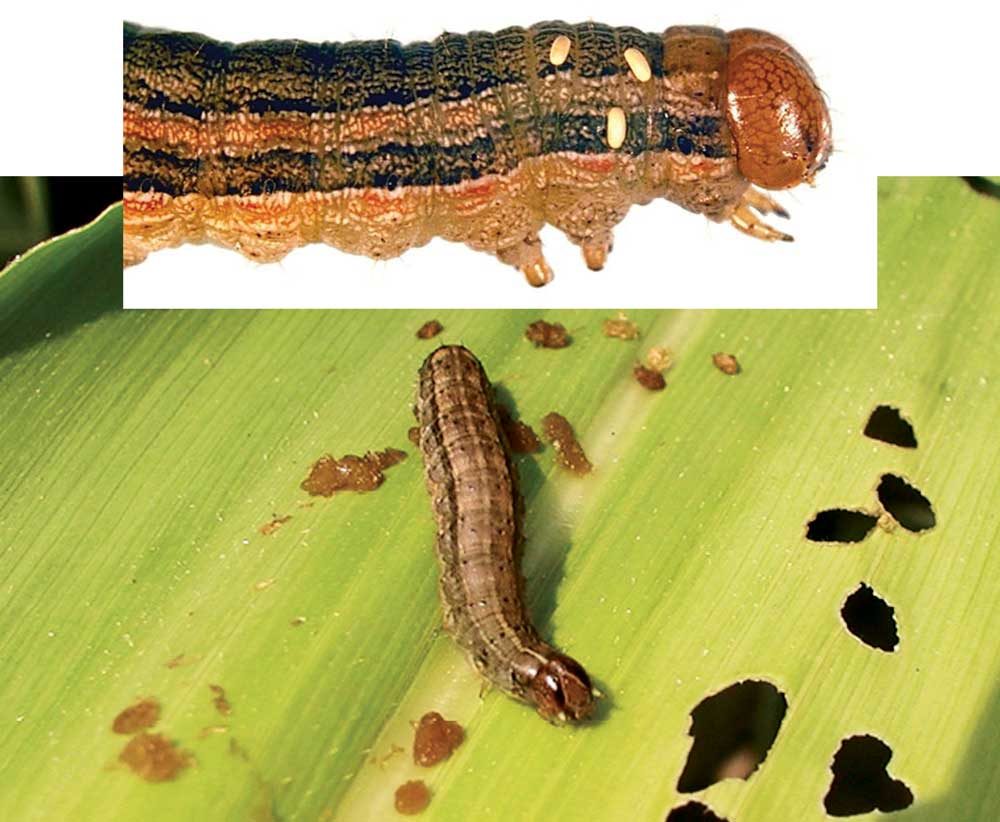No-Till Farmer
Get full access NOW to the most comprehensive, powerful and easy-to-use online resource for no-tillage practices. Just one good idea will pay for your subscription hundreds of times over.

The so-called “true armyworm” is one of the more frustrating early-season pests no-till corn growers encounter periodically, particularly if they are planting into small-grain or other grassy cover crops, or in fields near sources of grassy weeds.
The springtime pest should not be confused with the “fall armyworm,” another corn insect species which can become a problem later in the season, usually on late-planted fields. While neither pest usually causes widespread geographic damage to corn, localized areas can be devastated as they move from their grassy host plants into corn fields.
Ohio State University entomologists say true armyworm moths overwinter and then migrate northward from the southern U.S. and Gulf Coast in April and May — easily reaching Midwestern and northern corn-growing areas. While the pest does not overwinter in the more harsh winter climates of the northern U.S., annual migrations of moths are present each year.
The true armyworm (Pseudaletia unipuncta) attacks grass crops like cereal crops and seedling and whorl-stage corn. Entomologists say it is always associated with the presence of…